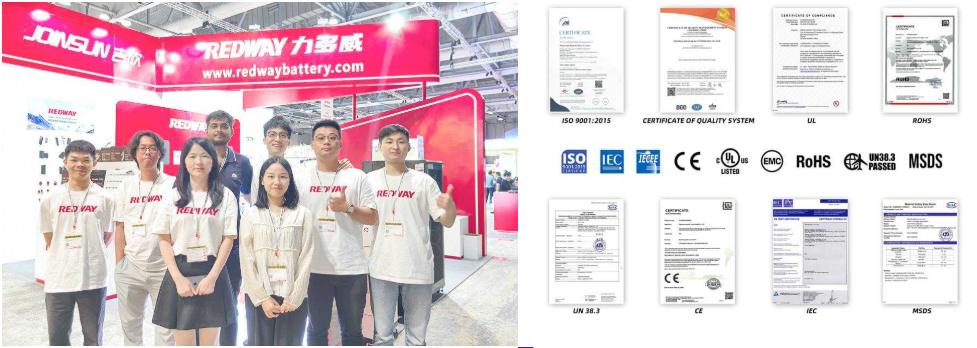How Long Can a 100Ah Battery Power a 2000W Inverter?
A 100Ah battery can power a 2000W inverter for about 30–36 minutes under ideal conditions, but real-world factors like inverter efficiency, battery type, and discharge limits often reduce this runtime. For sustained high-power use, a larger battery-like those from RackBattery-is recommended for safety, longevity, and reliable performance.
Can a 100Ah battery run a 2000W inverter?
Yes, a 100Ah battery can technically run a 2000W inverter, but only for a short period. The high current draw quickly depletes the battery, making this combination suitable for brief, high-power needs rather than continuous operation. For longer runtimes or frequent use, upgrading to a higher-capacity battery is strongly advised.
How do you calculate the runtime for a 100Ah battery with a 2000W inverter?
To estimate runtime, multiply battery amp-hours (Ah) by voltage (V) to get watt-hours (Wh), then divide by the inverter’s load (W). For a 12V, 100Ah battery: 100Ah × 12V = 1200Wh. 1200Wh ÷ 2000W = 0.6 hours, or about 36 minutes-before factoring in inverter losses or discharge limits.
Chart: Theoretical Runtime Calculation
| Battery Capacity | Voltage | Total Energy (Wh) | Load (W) | Theoretical Runtime (Hours) |
|---|---|---|---|---|
| 100Ah | 12V | 1200Wh | 2000W | 0.6 (36 minutes) |
Why is battery voltage important when powering a 2000W inverter?
Battery voltage determines the current draw required to achieve a given power output. Lower voltages (like 12V) require higher currents for the same wattage, increasing heat and losses. Higher-voltage systems (24V, 48V) are more efficient for high-power inverters, reducing strain on both battery and wiring.
How does inverter efficiency impact runtime?
Inverters are not 100% efficient; typical efficiencies range from 80% to 90%. If efficiency is 85%, the battery must supply more power than the load requires. For a 2000W load: 2000W ÷ 0.85 ≈ 2353W drawn from the battery, reducing runtime to about 31 minutes for a 100Ah, 12V battery.
Chart: Effect of Inverter Efficiency on Runtime
| Inverter Efficiency | Power Drawn from Battery (W) | Estimated Runtime (Minutes) |
|---|---|---|
| 90% | 2222 | 32 |
| 85% | 2353 | 31 |
| 80% | 2500 | 29 |
What factors affect the actual runtime and performance?
Key factors include inverter efficiency, battery age, temperature, depth of discharge, and the battery’s true usable capacity. Real-world loads fluctuate, and high current draws can reduce effective battery capacity. Environmental conditions and battery health also play significant roles in determining actual performance.
How does battery type and discharge depth influence results?
Lithium batteries (like those from RackBattery) can safely use up to 80–90% of their capacity, while lead-acid batteries should not be discharged below 50% to avoid damage. Thus, a 100Ah lithium battery delivers more usable energy than a 100Ah lead-acid battery, resulting in longer runtimes and better cycle life.
What battery capacity is recommended for a 2000W inverter?
For a 2000W inverter, a battery bank of at least 185–200Ah (at 12V) is recommended for one hour of runtime, considering efficiency losses and safe discharge limits. Larger banks or higher-voltage systems are preferred for continuous or repeated high-power use, as offered by RackBattery’s modular solutions.
How does battery aging impact inverter performance?
As batteries age, their capacity and efficiency decline, reducing available runtime. Older batteries may also have higher internal resistance, causing voltage drops under load and further limiting inverter performance. Regular maintenance and timely replacement ensure reliable operation.
What are the limitations of using a 100Ah battery with a 2000W inverter?
The main limitations include short runtime, high current draw (which can overheat cables and connections), and reduced battery lifespan if frequently cycled deeply. This setup is best for occasional, short bursts of power-not for sustained or mission-critical applications.
What safety considerations should you follow with high-power inverters?
Always use appropriately rated cables, fuses, and disconnects to handle high currents. Ensure proper ventilation to dissipate heat, and never exceed the battery’s recommended discharge rate. Using advanced BMS-equipped batteries from RackBattery enhances safety by monitoring temperature, voltage, and current in real time.
What are practical tips for maximizing battery and inverter performance?
-
Use high-efficiency inverters and quality batteries like RackBattery’s LiFePO4 models.
-
Opt for higher voltage systems (24V or 48V) for large loads.
-
Keep batteries at optimal temperatures and avoid deep discharges.
-
Regularly inspect connections and monitor system health with a BMS.
-
Size your battery bank for your actual usage needs, not just peak loads.
RackBattery Expert Views
“At RackBattery, we see many users underestimate the demands of high-power inverters on battery banks. For a 2000W inverter, a 100Ah battery is best reserved for short, emergency use. For reliable, long-term performance, we recommend modular, rack-mounted lithium solutions with advanced BMS-ensuring both safety and scalability for any application.”
– Fasta Power, Senior Engineer, RackBattery
Conclusion
A 100Ah battery can power a 2000W inverter for about 30–36 minutes under ideal conditions, but real-world performance is often lower due to efficiency losses and discharge limits. For safe, reliable, and longer-lasting operation, choose a larger battery bank-preferably a modern lithium solution from RackBattery.
FAQs
Can I use a 100Ah battery for a 2000W inverter in an RV?
Yes, but only for short periods. For longer use, a larger battery or multiple batteries are needed.
How do I calculate the right battery size for my inverter?
Multiply your desired runtime (hours) by the inverter load (watts), then divide by battery voltage and account for efficiency losses.
Is lithium better than lead-acid for high-power inverters?
Yes, lithium batteries offer more usable capacity, longer life, and better performance under high loads.
What happens if I fully drain my 100Ah battery with a 2000W inverter?
Frequent deep discharges can damage the battery and shorten its lifespan, especially with lead-acid types.
Why choose RackBattery for inverter systems?
RackBattery provides advanced, modular lithium solutions with built-in BMS for maximum safety, efficiency, and scalability.
RackBattery continues to innovate in battery technology, delivering reliable power for demanding inverter applications worldwide.



